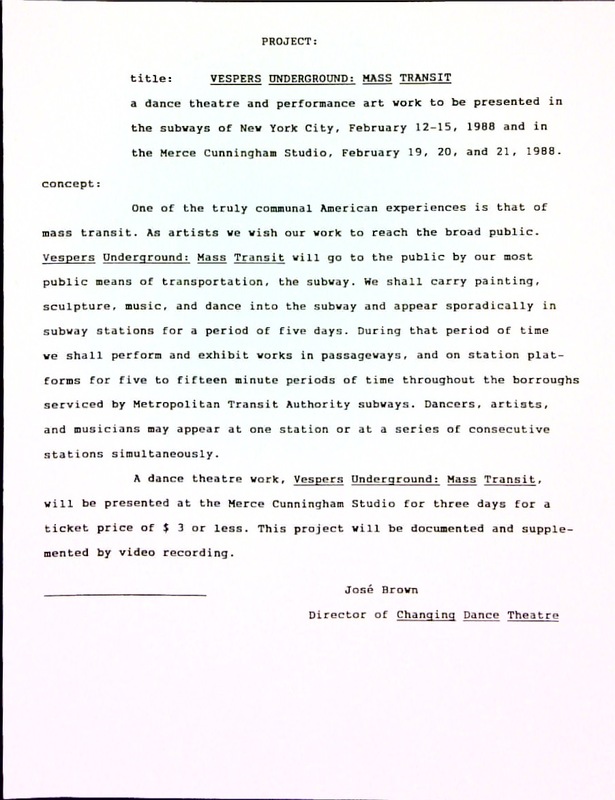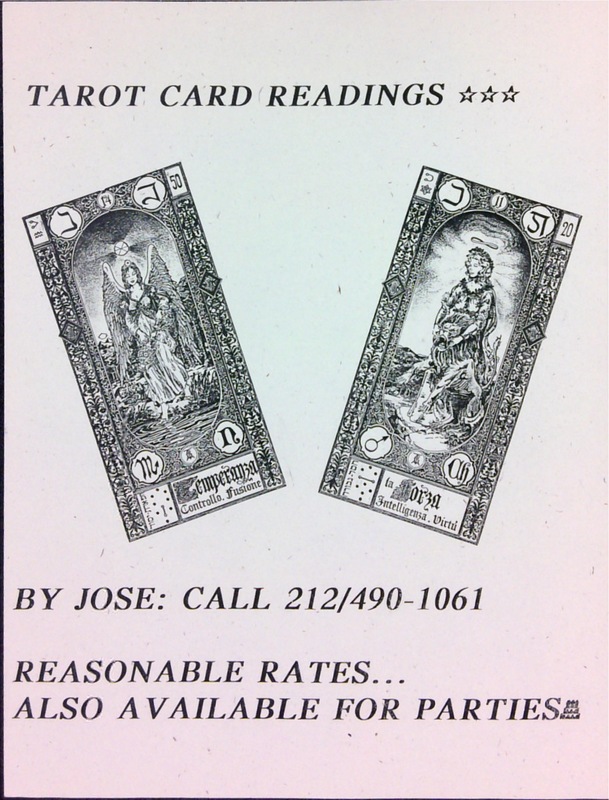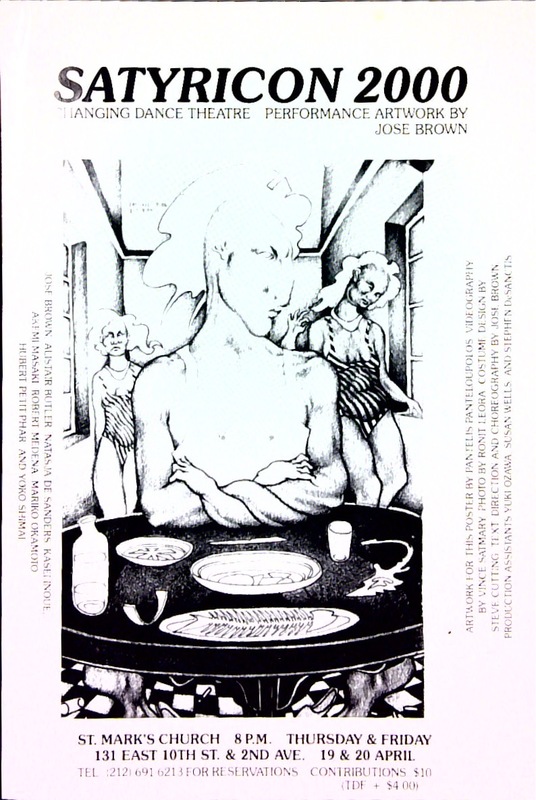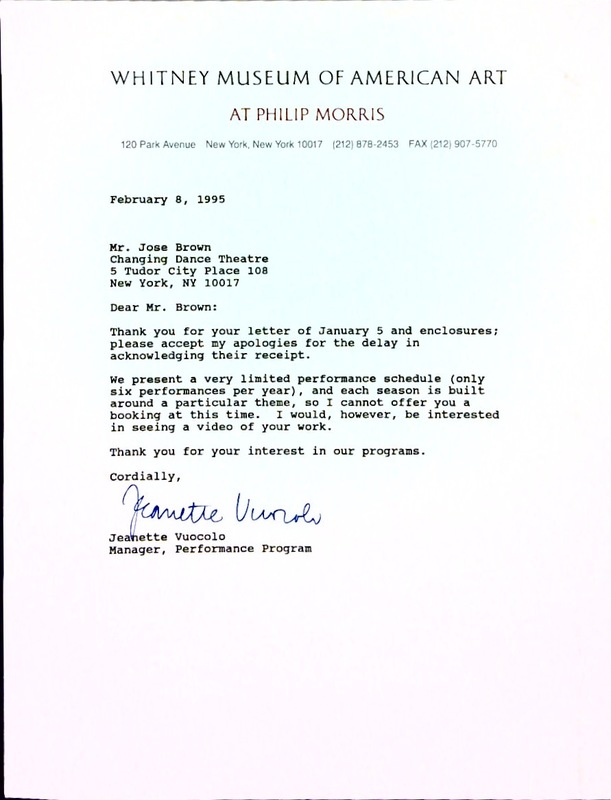New York
Date: Feb. 1988
Brown was incredibly interested in site-specific dance pieces, and one such example can be found in the piece “Vespers Underground: Mass Transit” which uses the city of New York almost as another character, or at the very least, incredibly essential to the function and message of the work. As mentioned in the project proposal, the piece would be presented at the Merce Cunningham Studio, Merce Cunningham being a choreographer most renowned for his subversive use of alternative spaces and sounds in dance pieces.
Date: Feb. 1988
Brown was incredibly interested in site-specific dance pieces, and one such example can be found in the piece “Vespers Underground: Mass Transit” which uses the city of New York almost as another character, or at the very least, incredibly essential to the function and message of the work. As mentioned in the project proposal, the piece would be presented at the Merce Cunningham Studio, Merce Cunningham being a choreographer most renowned for his subversive use of alternative spaces and sounds in dance pieces.
Date: 4/19/1988-4/20/1988
“Satyricon 2000” is one of Brown’s most recognized works, premiering at the peak of his notability in the New York dance scene. In this piece José Brown and Changing Dance Theatre dancer and collaborator, Akemi Masaki took to the streets of New York to expose the public to the shock of Brown’s Satyricon pastiche. During part of “Satyricon 2000” Brown wore a horse head and wrapped Masaki from head to toe in fabric, carrying her completely relaxed body through the streets like a corpse, causing a spectacle that eventually led to controversy amongst dance critics. Some found the piece misogynistic, however those who saw Brown’s intent viewed the piece as a parody of the way America exploits women, the poor, and Black men.
Date: February 8th, 1988
Towards the end of Brown’s career, he was very familiar with rejection letters similar to Jeanette Vuocolo’s. Brown’s work was interesting to dance event organizers and those with the power to fund further works; His resume included participation in the Pearl Lang and Rudy Perez companies, two well-known Judson Church performers. However, despite being able to get his foot in the door, he was ultimately denied the necessary funding much more often than not. In a 1988 letter to George Cummings Brown solemnly expresses, “I have never once in my life made more money than I need, only less.”



